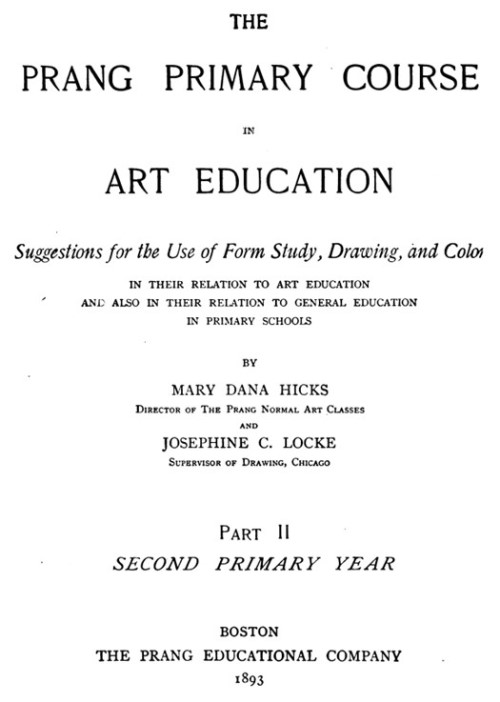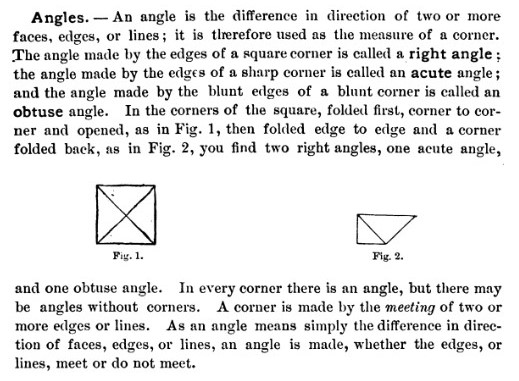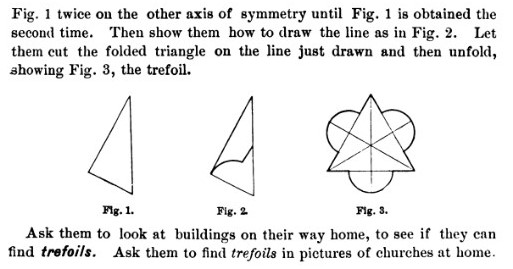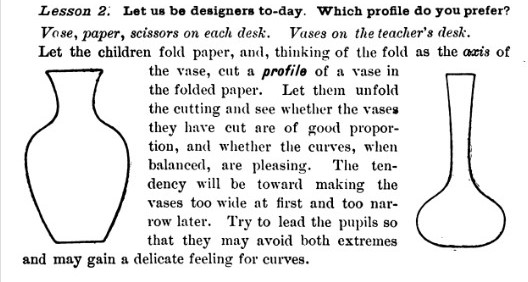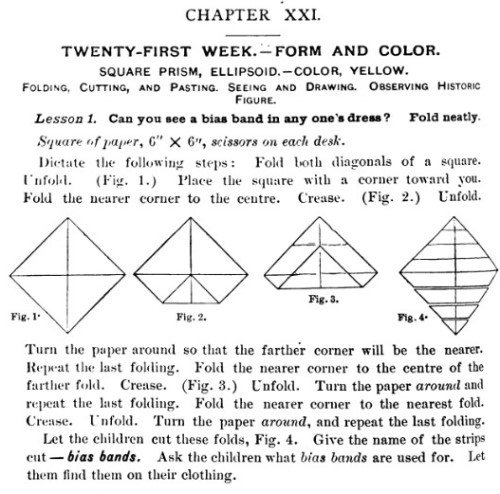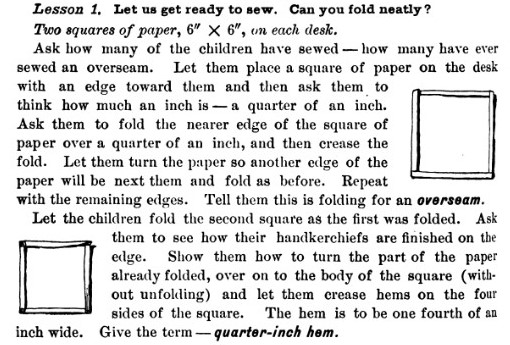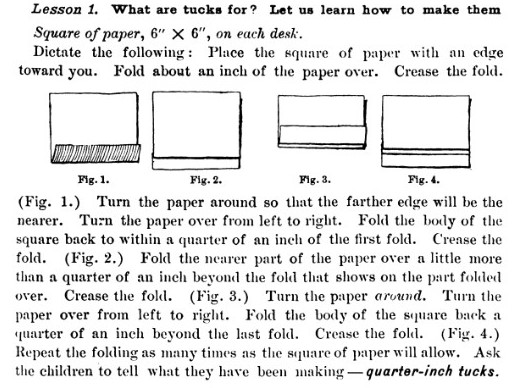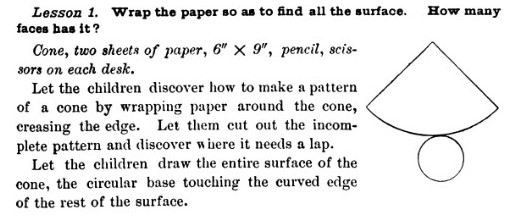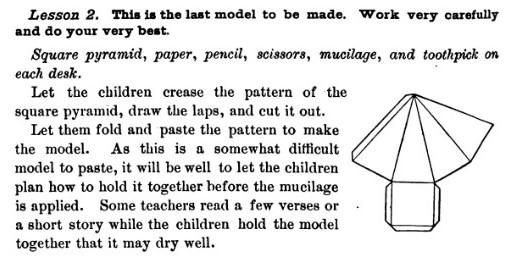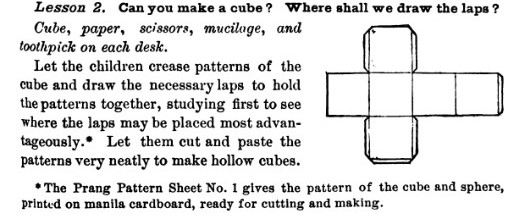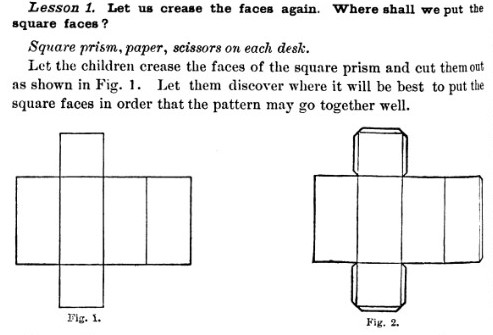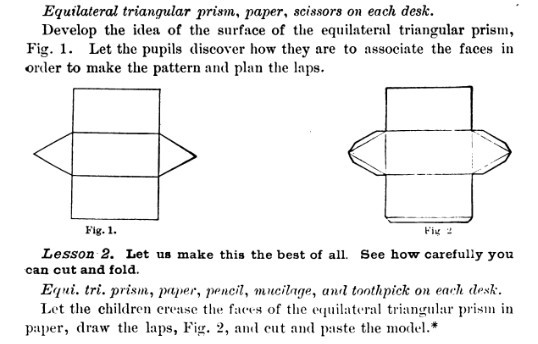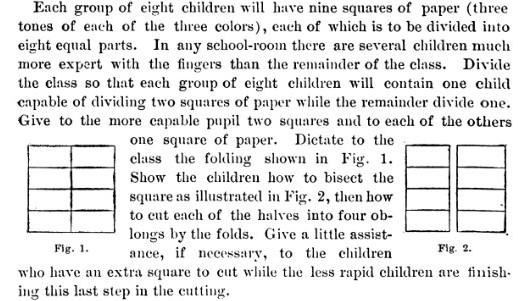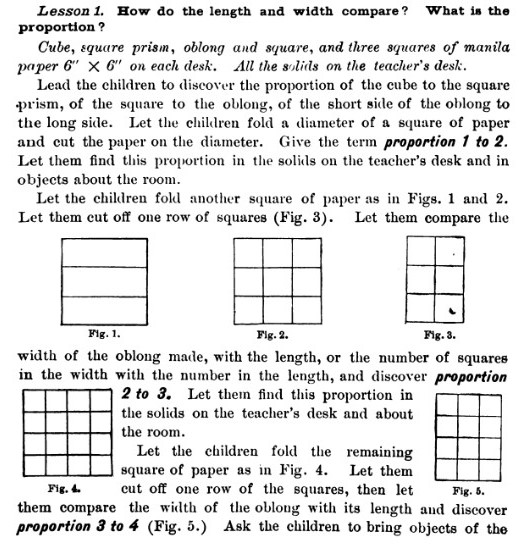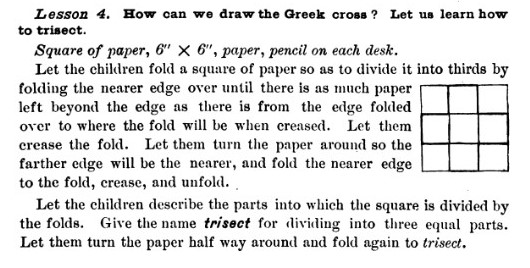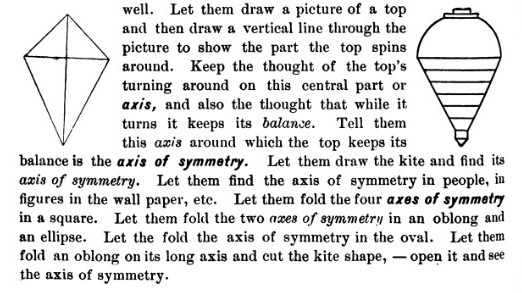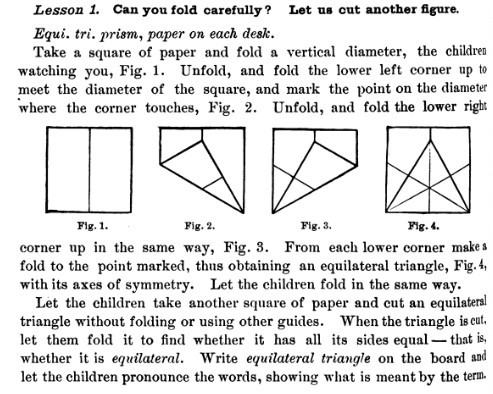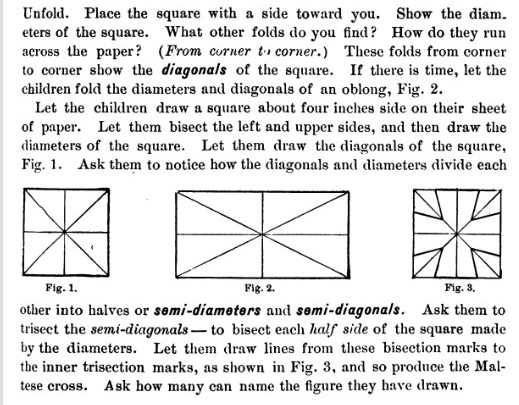| The Public Paperfolding History Project
Last updated 15/1/2024 x |
|||||||
| The Prang Primary Course in Art Education: Part 2: The Second Primary Year by Mary Dana Hicks and Josephine C Locke, 1893 | |||||||
| 'The
Prang Primary Course in Art Education: Part 2: The Second
Primary Year' by Mary Dana Hicks and Josephine C Locke
was published by The Prang Educational Company in Boston
in 1893. It contains some incidental paperfolding
material, but not to the same extent as the corresponding
course for the First Primary Year. A full copy of the work can be accessed here. **********
********** Analysis ********* Paperfolding is used: 1. To demonstrate that there are three kinds of corners - square, sharp and blunt
********** 2. To create a Fold and Cut Trefoil
********** 3. As a way of cutting symmetrical Vase Forms
********** 4. As a Means of Teaching Sewing Techniques Cutting Bias Bands
*** Folding Overseams
*** Creating Tucks
********** 5. To create templates fof the faces of polyhedra by wrapping paper around solid models For a Cone
*** For a Square Pyramid
********** 6. To make three-dimensional models from irregular templates A Cone
*** A Square Pyramid
********** A Cube
********** A Square Prism
********** Equilateral Triangle Prism
********** 7. To divide a square into smaller sections for use in teaching about colours
********** 8. To divide a square into a grid of smaller squares to help teach proportion
********** 9. To trisect a square into a 3x3 grid to help draw a Greek Cross
********** 10. To help teach about the axis of symmetry
********** 11. To construct an equilateral triangle
********** 12. As a means of helping to draw a Maltese Cross
********** |
|||||||
